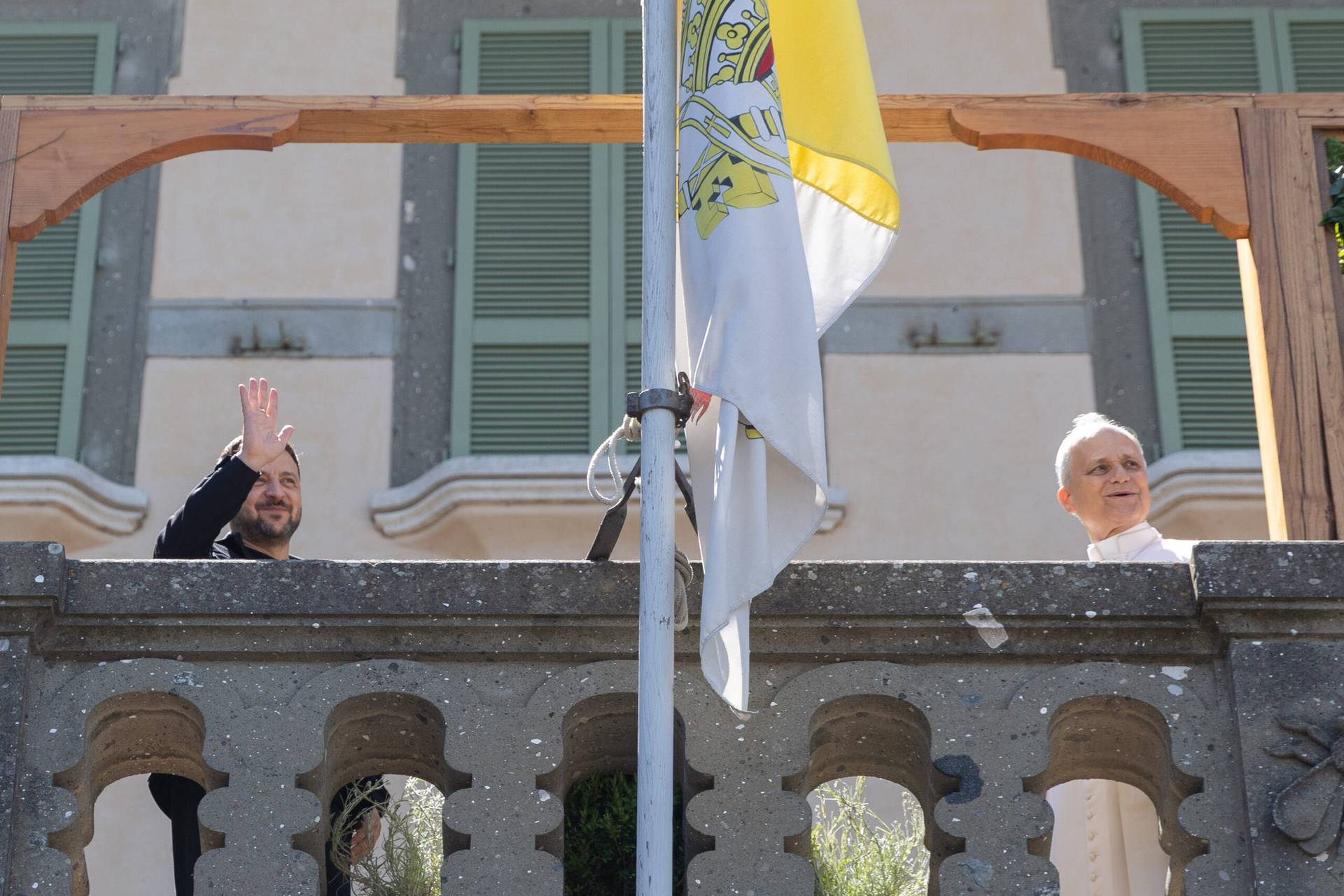ROME — Pope Francis calling for “a little violence, but good, good violence” is what reporters call a ‘man bites dog’ story: The pope is the world’s biggest proponent of nonviolence, after all.
More surprising is who the target of the violence is: Not ISIS or Al Qaeda, but the Vatican’s own communications apparatus.
The pope was speaking on Thursday to the first plenary assembly of the Secretariat for Communication, which was established two years ago.
The Secretariat is charged with bringing the disparate bits of the Vatican communications apparatus – outfits such as Vatican Radio, Vatican TV, the newspaper L’Osservatore Romano, the press office, the printing office, and the previous Council for Social Communications – under a single, unified office, and creating what Francis called “a truly ex novo institution.”
If the Vatican were starting from scratch today, year zero if you like, it is easy to tell what that ex novo institution would look like. The new office’s head, Monsignor Dario Edoardo Viganò, was previously in charge of the television center, and he has been clear he wants the Vatican’s communications to be centered on a web portal, available in five or six major languages, which will put out text, video, and audio content.
Viganò says he sees Disney as a model, but what he describes is more like the BBC website, or even a Catholic Buzzfeed.
Only, this is not Year Zero, and ex novo is not ex nihilo.
That major work needs doing is perhaps the one thing on which everyone agrees: I spent 15 years at Vatican Radio, starting in 2002, and I do not recall ever hearing anyone – no layperson, at least – contest the idea that a major reform of Vatican communications is past due.
It was a layperson, Lord Christopher Patten of England, in fact – who also led a reform of the BBC – who led the commission that provided the blueprint on which the current reform is based. That commission called for a unified office controlling all media, an emphasis on digital content and engagement in social media. The commission was also tasked with studying ways to slash the budget, which altogether was over 70 million dollars.
This is where violence enters the picture.
Vatican Radio takes up the largest chunk of the communications budget, with a staff of over 300 people. It is the obvious embryo of the ex novo institution to come: It has a professional staff, many holding the Italian journalist license; it has the most advanced website at the Vatican; and it has been, for years, experimenting with different forms of social media.
However, it also poses several roadblocks to achieving the new vision. Its staff is large, and includes several technicians specializing in radio. It goes out in nearly 40 languages, but linguistically, it’s still a Cold War institution: It broadcasts in a multitude of Eastern European languages, while several major Asian languages – including Thai, Bengali, and Malay – are not represented.
Also, and perhaps most fundamentally, Vatican Radio bleeds money.
Worst of all, there is no reliable method of measuring audience size, and some programs can probably measure their listeners in the low thousands. One Vatican official once told me, “You guys are not a lot of bang for the buck.”
There has been a lot of resistance to removing these roadblocks, including a sense that some of the smaller language sections are going to be allowed to fade away as staff retire. But there is also the reality of modern, and postmodern, media: Radio is not television, and neither of them is a newspaper.
Although a unified platform can serve all three – again, the BBC website manages to bring together text, audio, and video – merging staff, with the idea that writing a column and presenting a radio program are interchangeable jobs, will be harder, especially with older staff set in their ways.
Even more worrying for some of the staff is that it is not Disney, the BBC, or Buzzfeed that the final product will end up looking like, but the White House website.
Journalists – even for state media – have a role very much different from that of public relations officers, and there is resistance to becoming a large multilingual press office.
Yet Francis and Viganò know that if they can get the radio on side, making it an efficient digital platform, then dealing with the other much smaller offices will be a piece of cake. That’s why they are willing to use “a little violence” to get it done.
But will it be enough?
Those smaller offices have shown themselves to be hard to kill – and not all the genuine communications problems in the Vatican are traceable to the offices dedicated to communications and media. The most significant duplication happening in Vatican communications right now is in translation: Sometimes a papal speech can be translated independently, in whole or in part, 3 or 4 times by different offices.
Yet a central translation office hasn’t been established, and it would require coordination between the new communications office, the powerful Secretariat of State, and the Pontifical Household, which controls the pope’s schedule.
This gets us to the real rub.
The communications office has been given the primary task of making sure what the pope says and does is made known to the world as quickly as possible. However, whenever the pope speaks off the cuff – or says something controversial – the Secretariat of State tells everyone in the Vatican to wait, until the “official version” comes out, no matter that the “unofficial,” but authentic, version is all over television and the newswires.
This undercuts the ability of Vatican media to be on top of the news.
The problem is compounded when one realizes that the new communications office does not have any horizontal reach, and has no power to compel other Vatican offices – such as the ones on Doctrine, Integral Human Development, and Culture – to share information, or have trained communications staff, especially ones able to work in languages other than Italian.
In the Byzantine world of Vatican politics, Viganò – the highest-ranking Vatican official to not be a bishop – will have a harder time getting the cardinals and archbishops that head the other offices to follow his lead. Many of the more embarrassing moments for the Vatican over the years have come from talkative cardinals, not mistakes from the Vatican communications apparatus.
In any case, pulling together those disparate bits has been more difficult than expected, and the promised new web portal is over a year late in making its debut.
In short: The communications problems of the Vatican will not be solved with a website.














